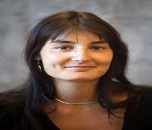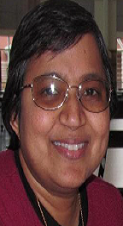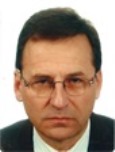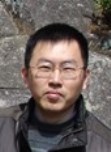Theme: Recent discovery and advancement in the field of Separation science
Euro Separation Techniques 2019
Euro Separation Techniques 2019 invites all the participants from all over the world to attend “10th International Conference and Expo on separation techniques’’ during July 30-31, 2019 Amsterdam, the Netherlands which includes prompt keynote presentations, oral talks, exhibitions, and poster presentations.
While much research and product development in industry is product oriented, it requires scientists with a grasp of the foundations of chemistry, creativity, the ability to work together and enjoy seeing the practical applications of their work. Euro Separation Techniques 2019 covers all the aspects of related field researchers, the forum of scientists, and students from all corners of the globe, come together to discuss separation technique and its advances.
Separation techniques are used to separate mixtures into its constituent elements and/or compounds. It turns out that many compounds and elements aren't found in nature in their pure form, but are found as parts of mixtures. Separating substances from mixtures is an important part of chemistry and modern industry. Depending on the physical and chemical properties of the substances in the mixture, we can choose the most appropriate separation technique to isolate them from the mixture. There are a number of different techniques used for separation like Chromatography, Centrifugation, Mass spectroscopy, HPLC, Analytical Techniques, Electro-liquid phase Separation techniques etc. Each session of the meeting will be included with expert lectures, poster and discussions, join us to design sustainable development processes, innovations by which and how these strategies drive new policies, advances the business and sustainability in drug production for further health care protection of lives. We are glad to invite you on behalf of organizing committee to join us, where you are the decision maker for the future.
The target audience for Euro separation techniques 2019:
Directors of the analytical chemistry department in various Universities and institutions
Research laboratories Scientist, Research scholars
Professor and Associate professor of analytical chemistry
Analytical instrument manufacturing company
Analytical experts in chromatography
Marketing teams of Industries with novel products to showcase at the conference
Theoretical scientists working on deriving analytical hypotheses
Analytical experts in Pharmaceutical and Life science
Industrial expertise working with various novel solid and liquid columns
Relevant Graduate and Postgraduate students
Euro Separation Techniques organizes 1000+ conferences every year across USA, Europe & Asia with support from 1000 more scientific societies and publishes 700+ open access journals which contain over 30000 eminent personalities, reputed scientists as editorial board members. Euro separation techniques 2019 welcome attendees, presenters, and exhibitors from all over the world to Amsterdam, Netherlands. We are delighted to invite you all to attend and register for the “10th International Conference and Expo on separation techniques (separation techniques 2019)” which is going to be held during July 30-31, 2019 in Amsterdam, Netherlands.
Track 1: Hyphenated separation techniques
The hyphenated technique is developed from the blending of a separation technique and an on-line spectroscopic detection technology. The significant improvements in hyphenated analytical methods over the last two decades have significantly broadened their applications in the analysis of biomaterials, especially natural products. This is useful for pre-isolation analyses of crude extracts or fraction from various natural sources, isolation and on-line detection of natural products, chemotaxonomic studies, chemical fingerprinting, quality control of herbal products, dereplication of natural products, and metabolomics
Track 2: Bioseparation techniques
Bioseparation is the name given to the practice of purifying biological products on large-scale, using fundamental aspects of engineering and scientific principles. The end goal of bioseparation is to refine molecules, cells, and parts of cells into purified fractions. Biological products can be separated and purified depending upon the following characteristics: density, diffusivity, electrostatic charge, polarity, shape, size, solubility, and volatility.
Track 3: Membrane technology in separation techniques
Membrane technology is a proven separation method used on the molecular and ionic levels. The main force of membrane technology is the fact that it works without the addition of chemicals, with a relatively low energy use and easy and well-arranged process conductions. For some time, membrane separation technologies of reverse osmosis, ultra-filtration, Nano-filtration, and micro-filtration have been used to concentrate and purify both small and large molecules.
Track 4: Application of separation techniques
Separation techniques are a part of separation science, involving the detailed study and controlled separation of mixtures .major advances in separation science have enabled biologists, chemists, pharmacists, and environmentalists to make breakthroughs of their own. Genomics, drug discovery, DNA fingerprinting and ultra-trace residue analysis, for instance, would not be possible without recourse to the findings generated by separation science.
Track 5: Analytical chemistry
Analytical chemistry is a branch of chemistry that deals with the separation, identification, and quantification of chemical compounds. Chemical analyses can be qualitative, as in the identification of the chemical components in a sample, or quantitative, as in the determination of the amount of a certain component in the sample. Analytical chemistry is also focused on improvements in experimental design, chemometrics, and the creation of new measurement tools. Analytical chemistry has broad applications to forensics, medicine, science, and engineering.
Track 6: Spectroscopy as separation techniques
Spectroscopy deals with the production, measurement, and interpretation of spectra arising from the interaction of electromagnetic radiation with matter. There are many different spectroscopic methods available for solving a wide range of analytical problems. The methods differ with respect to the species to be analyzed (such as molecular or atomic spectroscopy), the type of radiation-matter interaction to be monitored (such as absorption, emission, or diffraction), and the region of the electromagnetic spectrum used in the analysis. Spectroscopic methods are very informative and widely used for both quantitative and qualitative analyses.
Track 7: Advances in Chromatography and Mass Spectrometry
Chromatography and mass qualitative analysis are occupied for analysis of organic compounds. Electrospray ionization (ESI) could be a technique employed in the mass spectroscopic analysis. Recent advances in sample preparation techniques to beat difficulties encountered throughout measuring of little molecules from biofluids mistreatment LC-MS. Global bioanalysis seminars are conducted and those specifically applied for chromatography assays, ligand binding assays to know more advances.
Track 8: Desalination and water purification
These technologies use heat evaporative systems, involve brine heaters, flash chambers and high-temperature conversion processes in the conversion of seawater to fresh water. This technology has demanded the use of a wide range of materials involving the copper-base (cupronickels), iron-base (stainless steels) and titanium. Both the multi-stage flash (MSF) and the multi-effect distillation (MED) processes are very capital intensive, with large footprints.
The membrane process, or reverse osmosis (RO), is the low-temperature, high-pressure process in achieving the same ends. At the same time, this is a separation process used in the optimization and purification of potable and drinking waters. This process can be modularized or built as a full-scale plant for conversion.
Tracks 9: Recent trends in separation techniques
High-throughput separations (fast analysis) are in great demand in many fields, such as clinical, forensics, toxicology, environmental and pharmaceutical analyses. On the other hand, highly efficient separations are necessary for many applications, including metabolomics, proteomics, and genomics. Very complex samples, such as biological materials, tryptic digests or natural plant extracts require highly efficient and fast analytical procedures to yield high resolution within an acceptable analysis time. The growing demand to enhance efficiency and reduce analysis speed directed many researchers to develop innovations in the traditional separation system.
Track 10: Separation techniques in pharmaceutical chemistry
The development of the pharmaceuticals brought a revolution in human health. These pharmaceuticals would serve their intent only if they are free from impurities and are administered in an appropriate amount. To make drugs serve their purpose various chemical and instrumental methods were developed at regular intervals which are involved in the estimation of drugs. These pharmaceuticals may develop impurities at various stages of their development, transportation, and storage which makes the pharmaceutical risky to be administered thus they must be detected and quantitated. For this analytical instrumentation and methods play an important role.
Track 11: Advance in HPLC
High-performance liquid chromatography has stood on a rock hard foundation and has seen several innovations which have met the growing expectations in separation techniques. It has been used in an extremely wide range of analytical methods and it is impossible to give a comprehensive set of examples that would illustrate its wide applicability in a variety of matrices. Some desirable features through several innovations which have made a remarkable contribution to the popularity of the HPLC technique in laboratories across the globe, like, high separation efficiencies with lowest column back pressures, separations over wide temperature ranges etc.
Track 12: Separation techniques in chemical engineering
Chemical processes consist of separation stages in which the process streams are separated and purified. Heterogeneous mixtures consist of two or more phases which have a different composition. These mixtures consist of components that do not react chemically and have clearly visible boundaries of separation between the different phases. Components of such a mixture can be separated using one or more appropriate techniques. These separation processes includes gas-liquid (vapor-liquid) separation, gas-solid separation (vapor-solid), liquid-liquid separation (immiscible), liquid-solid, and solid-solid separation etc. This separation can be done by exploiting the differences in density between the phases. Gravitational force or centrifugal force can be used to enhance the separation.
Track 13: Biomagnetic separation techniques
Biomagnetic separation techniques have a wide range of applications in biosciences. The beads are uniform, mono-dispersed, paramagnetic, consisting of a nanometer-scale superparamagnetic iron oxide core encapsulated by a high purity silica shell. The silica is suitable for chromatography in order to purify target molecules. The technique is quick, simple and flexible for large and small samples overcoming the need to repeated centrifugation and pipetting. It is an exciting time for biomagnetic separation and a large number of specialties, companies, and patients that may benefit from it, from small production companies to large pharma and academic research institutions.
Track 14: Separation techniques in food chemistry
Separation Techniques is the most important unit operation in food processing. The first processes developed to separate food components selected physical or mechanical means that allowed simple separations involving solid–solid or solid-liquid systems. Another group of separation relied on heat-induced phase changes as the driving force for the separation. From simple evaporation to distillation and solvent extraction, such approaches allowed for the concentration of many liquid foods (i.e. milk, fruit and vegetable juices, etc.) and for as the industrial production of ethanol, liquor, and vegetable oils.
Track 15: Market Value of Separation Techniques
The Separation Techniques industry is indicating development quickly, with esteem anticipated that would hit 240 billion dollars by 2017, up from 164 billion dollars in the year 2010, stamping yearly development of about 7%, as per a current modern research report. Geologically, worldwide detachment innovations advertise has been portioned into four zones to be specific, North America, Europe, Asia-Pacific and Rest of the World. Separation techniques industry which is comprised of several types of equipment like chromatography, spectrometry, electrophoresis, is one of the emerging fields which shows the greater impact in the market.
Recommended: Separation Techniques Conferences | separation techniques conferences |chromatography conferences| separation science conference | Chemistry Conferences | Chemistry Meetings
Related Societies:
Europe: British Mass Spectrometry Society; Royal Netherlands Chemical Society; African Network of Analytical Chemists; Czech Chemical Society; Belgian Society for Mass Spectrometry; German Society for Mass Spectrometry; The Chromatographic Society; Chemical Society of France; Hong Kong Society of Mass Spectrometry.
USA: Chinese American Chromatography Association; Association of Analytical Communities; Association of Official Analytical Chemists; American Chemical Society; Canadian Society for Chemistry; Canadian Society for Mass Spectrometry; Federation of Analytical Chemistry and Spectroscopy Societies; Society for Analytical Chemists of Pittsburgh; American Filtration and Separations Society; Society for Electroanalytical Chemistry.
Asia-Pacific: Korean American Chromatography Association; Indian Society for Mass Spectrometry; Federation of Asian Chemical Societies; The Japan Society for Analytical Chemistry; Indian Membrane Society; Israel Society for Analytical Chemistry; Indian Society for Electroanalytical Chemistry.
Suggested Conferences
9th Global Chemistry Congress, July 23-24, 2018, Lisbon, Portugal; 9th World Congress on Green Chemistry and Technology, September 17-19,2018, Amsterdam, Netherlands; 5th World Congress on Chemical Engineering and Catalysis, August 28-30, 2018, Paris, France; 4th Edition of International Conference on Polymer Science and Technology September 13- 14, 2018 Prague , Czech Republic; 6th European Biopharma Congress September 18-19, 2018, Amsterdam, Netherlands; 8th World Congress on Spectroscopy and Analytical Techniques August 15-17, 2018, Stockholm, Sweden.
Market analysis
A separation process is a method used in science to separate two substances that once formed a mixture. The type of separation process used depends on the mixture's properties and components. Here are examples of separation techniques: distillation, evaporation, chromatology, filtration, fractional distillation, and magnetism. The end product of the separation process is one or more pure compounds.
Most industrial chemists spend their days separating the components of large quantities of chemical mixtures into pure or purer forms. The processes involved, such as distillation, account for 10–15% of the world's energy consumption. Methods to purify chemicals that are more energy efficient could, if applied to our petroleum, chemical, and paper manufacturing sectors alone, save 100 million tonnes of carbon dioxide emissions and us$4 billion in energy costs annually. Other methods would enable new sources of materials to be exploited, by extracting metals from seawater, for example. Unfortunately, alternatives to distillation, such as separating molecules according to their chemical properties or size, are underdeveloped or expensive to scale up. Engineers in industry and academia need to develop better and cheaper membranes and other ways to separate mixtures of chemicals that do not rely on heat.
The global cell separation techniques market is poised to grow at a CAGR of around 10.6% over the next decade to reach approximately $6.04 billion by 2025.some of the prominent trends that the market is witnessing include growing infectious diseases in emerging countries, increasing stem cell research, technological advancements of cell separation techniques and growth opportunities/investment opportunities. The global chromatography market is poised to grow at a mid-single digit CAGR to reach $18,077.7 million by 2024. Chromatography market is mainly classified by process type, technology, products, and applications. The chromatography global market is broadly classified as preparative chromatography and process chromatography based on process type. Among preparative and process chromatography type, process chromatography occupied the major share in 2017 and is expected to grow at strong CAGR. Based on technology, the market is classified into liquid chromatography (LC), gas chromatography, supercritical fluid chromatography (SFC) and thin layer chromatography (TLC). Among technology, liquid chromatography occupied the major share in 2017 and is expected to grow at a mid-single digit CAGR. Liquid chromatography market is further divided into high-performance liquid chromatography (HPLC), LC-MS and other liquid chromatography technology. Among liquid chromatography global market, high-performance liquid chromatography (HPLC) market held the major share and LC-MS market is expected to grow at the highest CAGR.
.
Market-related to Electrophoresis technique: The world market for electrophoresis equipment and supplies predicts a CAGR of 4.8% for the period of 2013-2018. North America is the leading market with the highest share in the total electrophoresis equipment and supplies market owing to increasing innovation. Asia-Pacific is expected to show the highest growth rate because of overall developments in the healthcare infrastructure and research facilities in the region. Rest of World has developing economies including countries like Mexico, Brazil and others are expected to contribute in the growth of electrophoresis equipment and supplies market.
Separation Techniques 2018
Separation Techniques 2017 marked with the attendance of Organizing Committee Members, Honorable Guest, Keynote and Speakers, Conference Attendees, Students, Media Partners and Collaborators for making Separation Techniques 2017 grand success communities representing more than 20 countries, who made this conference fruitful and productive.
The 5th International Conference and Expo on Separation Techniques hosted by the Euro Separation Techniques were held during October 23-25, 2017 at Holiday Inn Paris–Marne La Vallée, Paris, France based on the theme “Recent developments and advancements in the field of Separation Science". Which has covered the below scientific sessions:
- Membrane technology in separation processes
- Waste Water and Water Purification Techniques
- Novel separation techniques in chemistry
- Emerging separation technologies
- Chromatography as a Separation Technique
- Advancements in Sample Preparation Techniques
- Role of Spectroscopy as Separation Technique
- Hyphenated Techniques
Euro Separation Techniques expresses its gratitude to the conference Moderator, namely Dr. Maria Vilma Faustorilla, University of South Australia, Australia for taking up the responsibility to coordinate during the sessions. We are indebted to your support. Similarly, we also extend our appreciation towards our Poster judges namely, Dr. Guojun Liu, Queen’s University, Canada and Dr. Anne Jonquieres, University of Lorraine, France.
Euro Separation Techniques would like to convey warm gratitude to all the Honorable guests, Organizing Committee Members and Keynote Speakers of Separation Techniques 2017:
Dusan Berek, Slovak Academy of Sciences, Slovakia
Anne Jonquieres, University of Lorraine, France
Guojun Liu, Queen's University, Canada
Aleksandra Sander, University of Zagreb, Croatia
Euro Separation Techniques offers its heartfelt appreciation to organizations such as our esteemed Media Partners and other eminent personalities who supported the conference by promoting in various modes online and offline which helped the conference reach every nook and corner of the globe. It also took the privilege to felicitate the Keynote Speakers, Organizing Committee Members, Chairs and Co-chairs who supported this event.
With the grand success of Separation Techniques 2018, Euro Separation Techniques 2019 is proud to announce the "10th International Conference and Expo on Separation Techniques" to be held during July 30-31, 2019 at Amsterdam, Netherlands.
For more Details: https://separationtechniques.annualcongress.com/
Let us meet again @ Euro Separation Techniques 2019
Conference Highlights
- Hyphenated separation techniques
- Bio separation techniques
- Membrane science and technology
- Application of separation techniques
- Analytical chemistry
- Chromatography
- Spectroscopy as separation techniques
- Advances in Chromatography and Mass Spectrometry
- Desalination and water purification
- Recent trends in separation techniques
- Separation techniques in pharmaceutical chemistry
- Advance in HPLC
- Separation techniques in chemical engineering
- Bio magnetic separation techniques
- Separation techniques in food chemistry
- Market value of separation Techniques
- Separation Techniques Used In Geology / Mineralogy
- Radio chemical Separation
- Absorption and Adsorption Technology
To share your views and research, please click here to register for the Conference.
To Collaborate Scientific Professionals around the World
| Conference Date | July 30-31,2019 | ||
| Sponsors & Exhibitors |
|
||
| Speaker Opportunity Closed | Day 1 | ||
| Poster Opportunity Closed | Click Here to View | ||
Useful Links
Special Issues
All accepted abstracts will be published in respective Our International Journals.
- Journal of Chromatography & Separation Techniques
- Chemical Sciences Journal
- Journal of Analytical & Bioanalytical Techniques
Abstracts will be provided with Digital Object Identifier by































































































